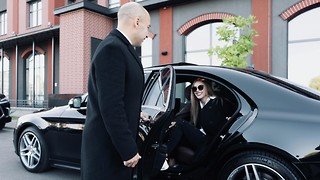Love on the Spectrum – a dating show where cheap entertainment encroaches on authentic representation
Meaningful representation takes a back seat as Netflix’s latest dating show capitalises on cringe-watching, writes Rosalind Phillips-Solomon.
My viewing of Love on the Spectrum is undeniably influenced by my perspective as an autistic person. As I watch, I can’t help but wonder who this show is for. Are the producers trying to do good for autistic people, or simply producing entertainment?
Of course, both can be true. However, Love on the Spectrum seems to prioritise the production of palatable and endearing content over that which is educational. Attempts at providing information are limited by the show’s premise: a singular approach, which could never provide a fully rounded representation of the autistic spectrum.
The show features footage of dates, alongside interviews of single and coupled autistic people, their families, and professionals assisting them with social skills. Autistic people typically have issues with social communication, which can lead to awkwardness – especially early on in relationships. The editing of Love on the Spectrum seizes upon this. For example, the editors have made it appear as though Andrew’s speed date with Casey ended with a long period of uncomfortable silence, ended only by a bell. However, changes in Casey’s pose suggest that a far longer period of time elapsed between these moments, in which Andrew may well have recovered from his blunder.
It would be naïve to expect complete authenticity from a reality television show. However, post-production editing can make dates seem more or less successful according to a neurotypical standard. This produces ‘cringeworthy’ content, entertaining to some, but also alienating. Autistic romantic interactions are shown to the viewer in the name of representation, but how sincere and useful can this be if the appearance of those interactions may have been manipulated?
“The show fails to present the diversity of people on the autistic spectrum, both in clinical terms and with regards to race and sexuality.”
The choice of music throughout is whimsical and contributes to the infantilisation of the autistic daters. Each time a new autistic person is introduced, a voiceover describes their likes and dislikes, illustrated with short clips. Through these introductions those familiar with ASD will recognise signs of autism, which are not signposted. Perhaps these segments are an attempt at accessibility; however, such concerns are not reflected elsewhere. Indeed, their overall effect is patronising and reductive, relating to a broader theme of the voices of the autistic people being de-centred.
Participants are often spoken about by their parents, including Chloe whose father describes her as lacking social intelligence. A show like this should allow autistic people more control over the narration of their stories. The promise of this prospect is shown in the coverage of Olivia. Her family is not included in the film, and so she speaks entirely for herself. During her dates, Olivia talks about autism on a personal and a more general level, such as by clarifying that people formerly diagnosed with Asperger’s, are now classified as having ASD. While we should have heard more from the daters about their experiences, the show should also have made better use of experts to provide a more general sense of what autism is, without encroaching upon the autistic people’s descriptions of their individual experiences.
“The nature of reality television as we know it means that entertainment is prioritised at the expense of useful representation.”
At one point Olivia asks her date “What does autism look like to you?” This relates to my concern that the show fails to present the diversity of people on the autistic spectrum, both in clinical terms and with regards to race and sexuality. While I was pleased to note that the topic of autism and gender is raised in the show, the discussion of this issue in itself highlights a possible outcome of propagation of autistic stereotypes: individuals missing out on diagnoses and support.
Some autistic people are able to mask so ‘successfully’ that they can pass as neurotypical – an idea which is not explored on the show. Indeed, the social skills coaches on the show essentially teach the autistic people how to present as neurotypical. While at times this is helpful for autistic people, it can contribute to fatigue and mental health problems.
There is also no representation or discussion of non-verbal autistic people in this show, perhaps because it doesn’t fit with the show’s niche. This also relates to my ongoing suspicion about the prioritisation of ‘cringe’. Viewers may not feel guilty laughing at the cast’s mishaps, or finding them inspiring, despite the ableist implications of these actions. Representation of non-verbal autistic people would not make for such easy or comfortable viewing in a society which is so disquieted by disability and difference.
And so, the nature of reality television as we know it means that entertainment is prioritised at the expense of useful representation. I cannot deny that some moments made me quite emotional, particularly those between Jimmy and Sharnae. Despite my concerns about the show, seeing these fellow autistic people happy and in love made me feel good. For fans of dating shows, Love on the Spectrum, which has recently been renewed for another season, may be enjoyable. For those readers who want to learn about autism and autistic people, I urge you to look elsewhere.
 News / Uni offers students £55k in payouts31 October 2025
News / Uni offers students £55k in payouts31 October 2025 News / Uni error forces deeper spending cuts31 October 2025
News / Uni error forces deeper spending cuts31 October 2025 News / Students launch women’s society excluding trans women31 October 2025
News / Students launch women’s society excluding trans women31 October 2025 News / Students allowed to use AI, says new uni guidance31 October 2025
News / Students allowed to use AI, says new uni guidance31 October 2025 News / College rowing captains narrowly vote to exclude trans women31 October 2025
News / College rowing captains narrowly vote to exclude trans women31 October 2025










